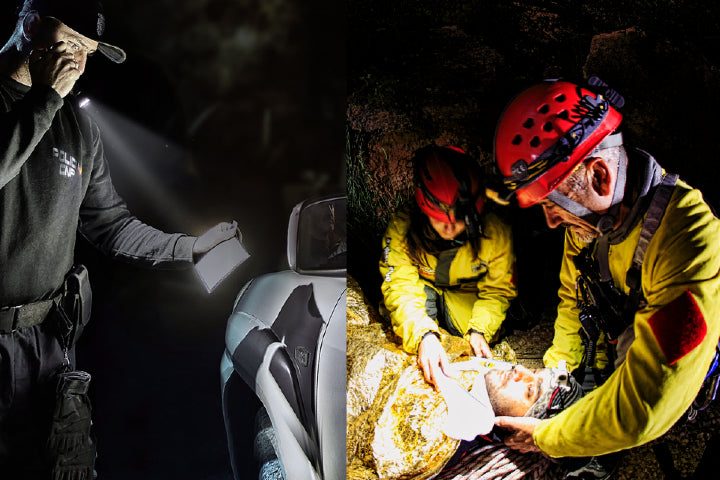Smart Tips for Cross Country Running
Cross-country running, often described as both invigorating and challenging, is one of the most rewarding outdoor sports. Combining endurance, agility, the peace of nature, and the thrill of adventure, cross-country runners must navigate unpredictable terrains and adapt to ever-changing conditions. Whether you’re an experienced runner or a newcomer to the trail, having a few smart tips can make all the difference. In this article, we’ll cover key strategies, essential gear, and safety practices to help you enjoy your cross-country experience to the fullest.
Plan and Familiarize Yourself with the Route
Knowing the route is crucial in cross-country running. Cross-country courses vary greatly, from forest trails to open fields, and may include hills, uneven ground, and natural obstacles.
Before heading out on a cross-country trail, take some time to check the map and get familiar with the route. Most trails provide a map that highlights potential challenging spots, which is especially helpful for planning your run. Be sure to assess terrain conditions as well, since weather can make surfaces muddy or slippery; if possible, visit the route beforehand or look up trail reviews to understand current conditions. Additionally, many cross-country trails include hills and rough terrains, so it’s wise to incorporate elevation training into your routine to help you handle these changes without losing pace or balance.

Dress Appropriately for the Trail
Choosing the right apparel is essential for both comfort and performance in cross-country running, where you need clothing that’s both breathable and durable. Opt for moisture-wicking fabrics that draw sweat away from your body to keep you dry and comfortable, and in cooler months, layer up with removable layers that allow you to adjust as you warm up during the run. Supportive footwear designed specifically for trail running or cross-country is also a must; these shoes provide better grip, stability, and protection over standard tennis or running shoes with reinforced soles that shield your feet from sharp rocks or roots along the trail.
Warm-Up to Prevent Injuries
Cross-country running requires both agility and stamina, and without a proper warm-up, you could be at risk of injury. Start with dynamic stretching exercises, like leg swings and arm circles, to activate your muscles and prepare for the physical demands ahead. Adding a few short sprints or strides helps elevate your heart rate and gets your legs moving, setting the pace for the run. Since cross-country trails often have uneven terrain, focus on strengthening your calves and ankles to help prevent strains or twists, ensuring you’re ready to handle any obstacles the trail may present.

Choose a Reliable Headlamp for Night Runs
Cross-country runners sometimes face early morning or evening runs due to busy schedules, especially in the colder months when daylight is limited. A reliable headlamp, like the Fenix HM65R-T headlamp, is an excellent choice. Known for its durability and brightness, this headlamp provides ample light even in the darkest trails. With adjustable settings, it allows you to adapt the light output to your needs, whether navigating through dense woods or open fields.

The Fenix HM65R-T also features a comfortable, non-slip headband with Fenix's easy-adjust SPORT tightening system, ensuring it stays secure while you run. Having this headlamp gives you an edge in low-light conditions and can enhance your awareness of your surroundings, which is essential for safety.
Strengthen Your Core and Lower Body
Core strength and lower body conditioning are crucial for cross-country running, as they improve stability and help prevent injuries. Here are a few exercises to consider:
- Planks and Russian Twists: Both exercises strengthen your core, which aids in maintaining balance on uneven trails.
- Lunges and Squats: These exercises target your quads, hamstrings, and glutes, all of which are essential muscles for uphill running.
- Calf Raises and Single-Leg Balances: Strengthening your calves and practicing balance will prepare you for sudden changes in terrain and elevation.
Hydrate and Fuel Properly
Proper hydration and nutrition are essential in cross-country running, especially since you may be running for an extended time without access to water. To stay energized and prevent fatigue, be sure to hydrate adequately before you start, and if you’re planning a longer run, always bring water bottle or hydration pack. Emergency equipment like water purification straws or tablets can also be a good idea in case of an accident that might leave you stranded. Bring light snacks, like energy bars, to help maintain your energy levels on lengthy routes. After your run, rehydrate and refuel with a mix of carbohydrates and protein to support muscle recovery and keep you feeling strong.
Pace Yourself and Practice Breathing Techniques
Pacing yourself is key in cross-country running, as trails often feature challenging sections that require bursts of energy. Rather than starting out too fast, begin with a slow and steady pace to conserve energy for tougher parts of the trail. Incorporate interval training into your preparation to build stamina and get accustomed to adjusting your speed on varying terrain. Practicing deep, rhythmic breathing helps keep your heart rate stable, prevents early exhaustion, and allows you to maintain control throughout the run.
Bring a High-Quality Flashlight for Safety
For long trails that might take you deeper into wilderness areas, a high-quality flashlight can be invaluable. The Fenix PD36R V2 flashlight is an excellent option for cross-country runners due to its powerful beam and rechargeable battery. Compact and lightweight, the PD36R V2 is easy to carry, and its brightness ensures you’ll have plenty of visibility if you find yourself running in the dark. Its rugged construction can withstand outdoor conditions, providing you with reliability when you need it most.

Be Mindful of Wildlife and Natural Obstacles
Cross-country trails frequently pass through wildlife habitats, so it’s important to take precautions to avoid potential risks. Stay alert and keep an eye on your surroundings, especially during dawn or dusk when animals are more active. Making some noise, like speaking or clapping occasionally, can help alert wildlife to your presence and prevent surprise encounters. Show respect for the environment by sticking to marked trails, avoiding disturbances to plants or animals, and leaving no trace to help preserve the natural landscape for future runners and wildlife alike.
Practice Mental Focus and Set Goals
Cross-country running requires not only physical endurance but also mental strength. Long trails and challenging terrains can be daunting, but setting mental checkpoints can keep you focused and motivated:
- Break the Trail into Sections: Mentally dividing the trail into sections can make the run feel more manageable.
- Set Incremental Goals: Set small goals along the way, such as reaching the next hill or covering a certain distance before a break.
- Stay Positive: Encouraging yourself with positive self-talk can make a big difference when fatigue sets in.
Cool Down and Recover
After a run, prioritize recovery to avoid injuries and promote muscle repair. Here are some effective cool-down techniques:
- Stretch and Foam Roll: Target your legs, back, and shoulders to release tension and prevent soreness.
- Hydrate and Refuel: Drink plenty of water and eat a nutritious snack to replenish lost nutrients.
- Rest and Ice as Needed: If you feel any strain or discomfort, icing sore areas and getting plenty of rest will aid in recovery.

Cross Country Running - A Rewarding Experience
Cross-country running provides both physical and mental rewards. By preparing well, using the right gear, and following these smart tips, you’ll be better equipped to enjoy every mile and tackle any challenge the trail throws your way. From your choice of footwear to the Fenix HM65R-T headlamp and PD36R V2 flashlight, having reliable equipment can make your cross-country running experience both safe and enjoyable. So lace up, hit the trail, and enjoy the journey of cross-country running!















